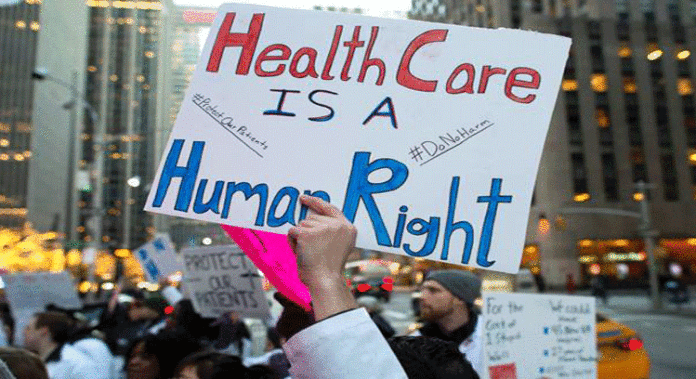
ONE OF the planks of President Donald Trump’s reforms when he won the White House was the scrapping of what has been popularly known as ‘Obamacare’ but officially known as the Affordable Care Act (ACA).
Based on the historical rate of inflation in the States, health care spending could account for almost 50% of gross domestic product in 30 years — an unsustainable trend that can’t be solved through changing the insurance landscape.
The A.C.A, focused on expanding coverage, with very little to address cost of care in the early stages. That became an almost fatal flaw in the system as many voters saw already expensive health care costs rise and were unhappy being forced into the system.
The American Health Care Act (A.H.C.A.) – ‘Trumpcare’ – which was finally passed in the House of Representatives last week after weeks of ‘internal negotiations’, focuses on the cost of coverage.
Lessons can be learned from a selection of other industrialised countries, where health care costs per capita are less than half of what they are in America. Americans spend about 25% to 30% on administrative costs; if that was brought into line with those other countries, to a level of around 15%, the US could save about $320 billion of the $3 trillion the country spends on health care.
Countries that provide good primary care have better health outcomes and lower costs because they provide efficient care of common and chronic illnesses. In America, the high cost of medical education, a reimbursement system that favours specialists and a poorly supported primary care network have decimated our primary care work force.
In the 1980s, Spain created taxpayer-funded community health centres located within a 15-minute radius of every citizen. This dramatically improved health measures and provided a good base of primary care for everyone in the country. There are calls for this system to be adopted across the pond.
Community health centres could be funded directly by the government based on population, and they would provide a wide and well-defined range of services, including primary care, with weekend and evening hours, telemedicine, basic pharmaceuticals and education for management of chronic illness. Mental health care would be provided, including management of drug addiction. On top of this they could serve as a base for managing crises such as epidemics and bioterrorism events.
Anyone could use a community health centre without having to give proof of income, free of charge. People could still use private primary care providers, but they would have to pay for them, directly. Insurance would be reserved for emergencies, through inexpensive catastrophic coverage. Even Medicaid and Medicare could eventually be moved into a catastrophic-only model.
However, such centres already exist throughout the USA, many providing state-of-the-art primary, mental and dental care for low-income people but even that comes at a cost of around $1,000 each a year. At that price, the entire country could be covered for $325 billion a year.
The savings would more than pay for the program: Right now, the government spends $250 billion a year on tax credits for employer-based coverage. Since insurance costs would decrease significantly, the revenue lost by this credit would decrease proportionately.








